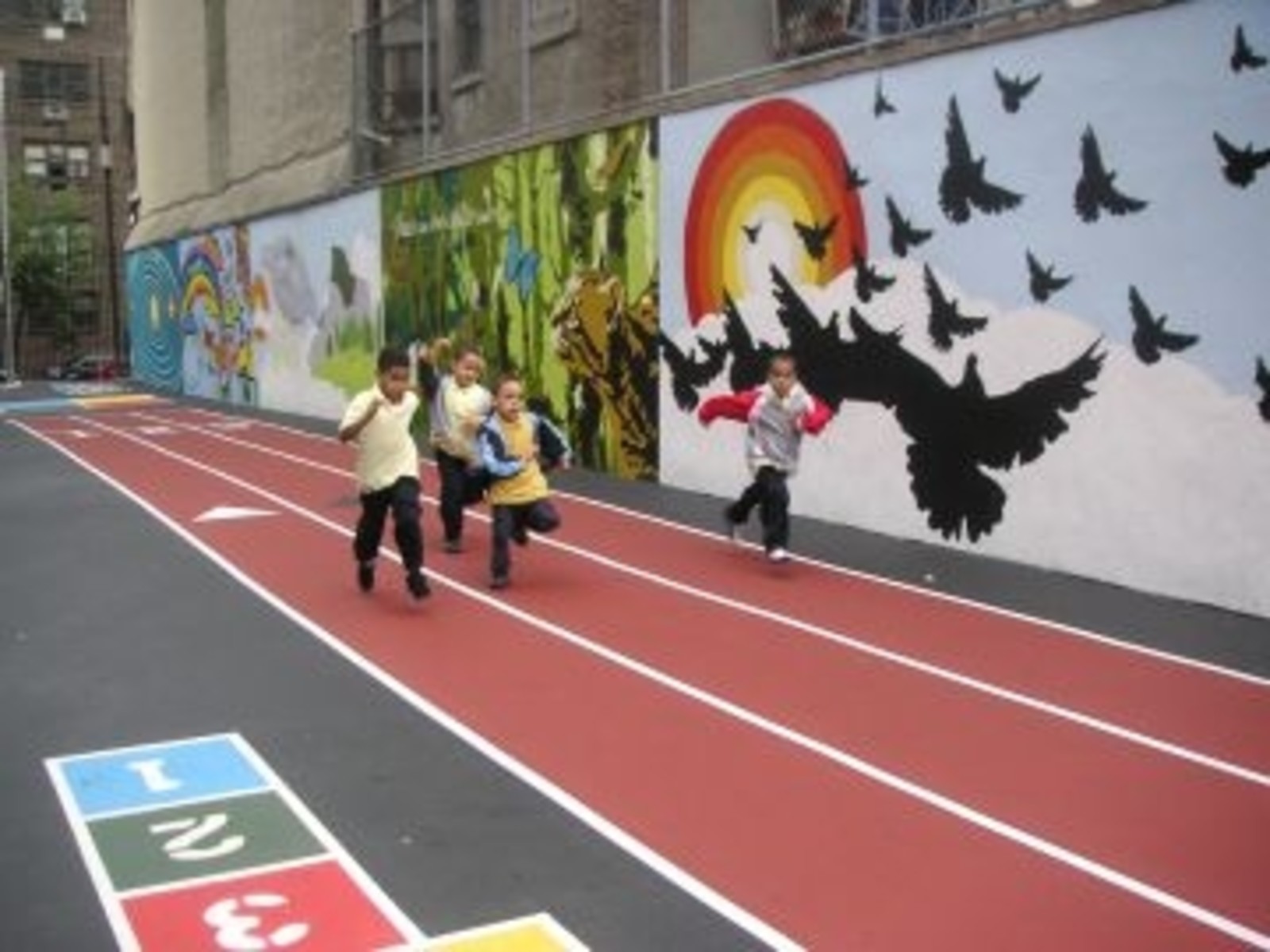Fitness Focus: Hitting a wall on facilities

 Out2Play has built 118 playgrounds (some with dedicated athletic facilities, all with student input) at schools around town since 2005. (Photo courtesy of Out2Play)
Out2Play has built 118 playgrounds (some with dedicated athletic facilities, all with student input) at schools around town since 2005. (Photo courtesy of Out2Play)
With layoffs looming, it'd be nice to believe that the hardworking teachers we respect will make do on shoestring budgets- like heroes in a sports movie. But if we examine the Department of Education's effort to promote fitness, we may conclude that heroic efforts and good intentions without athletic space may not be enough.
Like principals eking out 2011-2012 budgets, the DOE's fitness team began its reform by trying to get as much as possible out of available staff. Lori Rose Benson, the director of DOE's Office of School Wellness Programs, told me last year that one in four elementary schools had no PE teacher when she arrived in 2003. Now that's down to less than one in ten, she says, because "there are folks within our system talking to principals about what's realistic in scheduling." Benson also invested in professional development for PE teachers. But there's little platform for these teachers. According to the Women's City Club of New York, one in five local high-schoolers polled by the Centers for Disease Control and Prevention in 2009 reported that they had no gym class in an average week.
Which raises the question: can you teach physical education without a properly designed classroom? The answer is: yes, you can- but it's awfully hard to measure what students are getting out of it.
The practice of aerobic training in tiny spaces, is legitimate. "A lot of our schools are in settings where you have to use a classroom to do activity, so we created a session called No Gym, No Problem which is about getting at lifetime fitness activities," Benson told me. The coursebook for No Gym, No Problem mentions things like "virtual soccer" or "dancing through the decades" that aim to make physical expression feel natural and measurable in any tight space.<!--more-->
The DOE also offers Move-to-Improve and Spark, other kinetics-where-you-least-expect-'em modules, to teachers in 200 elementary schools.
"A lot of it is about creating an environment where physical activity is encouraged," Benson said.
But too many students live in environments where physical activity is zilch, so Benson and her team spend a lot of time trying to forge partnerships with third parties who offer outlets outside of the school building. Andrea Wenner started her nonprofit playground development company, Out2Play, in part from a conviction that "running relay races in the halls" did not provide the sense of strategy, release and efficacy kids can get in more devoted athletic settings.
Is it fair to worry about PE when some schools are facing near-total decimation? It is if we're interested in training citizens, not just test-takers. Unlike science or music or art, which some schools manage to teach without dedicated classrooms, athleticism involves a coordination of the whole body with a purpose. And it often requires a student to recognize her constantly shifting role as part of a team.
And any subject that teaches our youngsters to tough it out together deserves all the space it can get.
Please Post Comments